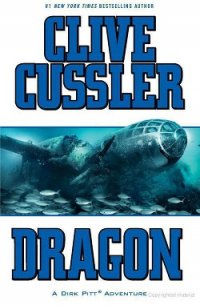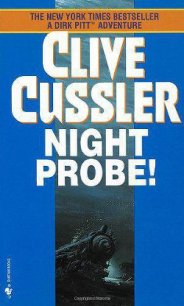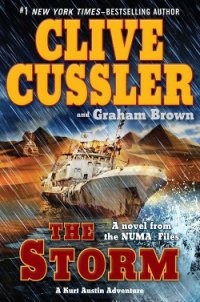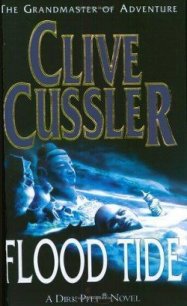Black Wind - Cussler Clive (книги полностью бесплатно txt) 📗
shared some sake with Tanaka and was able to pry the secret payload out of him. It was smallpox."
“Good God, so it's true!” Gunn exclaimed.
“Apparently so. He wrote that the payload was a freeze-dried virus, which was to be detonated and dispersed at altitude above the most concentrated population points of each city. Within two weeks, an outbreak of smallpox was expected all along the West Coast. With a thirty percent mortality rate, the deaths would have been staggering. The Japanese figured the resulting panic would allow them to negotiate a peace settlement on their terms.”
"The threat of more smallpox bombs on our home soil might very well have changed the resolve of many people to finish the war, Gunn speculated.
An uneasiness crept over the room as the three considered how history may have played out differently had the I-403 successfully completed its mission. Their thoughts then turned to the possibility of a more current threat.
“You mentioned that the virus was freeze-dried. So they must have had the ability to store the virus for long periods and then rejuvenate it,” Dirk commented.
“Necessary for a long sea voyage,” Yaeger added. “According to Max the Japanese had difficulty in keeping the viruses alive in their munitions for any length of time. They ultimately perfected a way of freeze-drying the virus, for easier handling and longer storage, until the need for activation when deployed. Insert a little H2O and you're in business.”
“So the virus could still be a viable danger, even after sixty years at the bottom of the sea,” Gunn remarked. “I guess that answers Jost's question.”
“There's no reason the smallpox wouldn't survive in freeze-dried form if the canisters hadn't cracked during sinking. Since they're made of porcelain, the canisters could survive intact for centuries underwater,” Dirk said. “Might also explain the various interior segments to the bomb. A compartment with water was needed to rejuvenate the virus.”
“Perhaps it was more fortunate than we know that all but one of the canisters were demolished on the I-403,” Gunn remarked.
“That still leaves one canister unaccounted for,” Dirk replied.
“Yes, as well as the other mission ordnance,” Yaeger added.
Dirk and Gunn looked at each other. “What other mission?” Gunn asked incredulously.
“The I-411.”
Yaeger felt their eyes boring right through him.
“Didn't you know?” he asked. “There was a second submarine, the I-411. It, too, was armed with the Maka^e ordnance and was sent to attack the eastern seaboard of the United States,” Yaeger said quietly, realizing he had just dropped a bomb of his own.
It had been a long day for Takeo Yoshida. A crane operator for the Yokohama Port Development Corporation, Yoshida had toiled since six in the morning loading an aged Iberian freighter with container after container of Japanese consumer electronics bound for export. He had just secured the last of the metal containers onto the ship's deck when a radio crackled in the crane's control cabin.
“Yoshida, this is Takagi,” the deep voice of his foreman grumbled. “Report to Dock D-5 upon completion with San Sebastian. A single loading for the vessel Baekje. Takagi, out.”
“Affirmed, Takagi-san,” Yoshida answered, holding his disdain under his breath. Just twenty minutes to go on his shift and Takagi gives him a last-minute assignment across the shipyard. Securing the crane, Yoshida walked eight hundred yards across the Honmoku Port Terminal toward Dock D-5, cursing Takagi's name with each step he took. As he approached the end of the pier, he glanced beyond at the waters of the bustling port of Yokohama, where a constant stream of commercial ships jockeyed into position for loading and unloading.
With three hundred meters of waterfront, container terminal D-5 was big enough to handle the largest cargo ships afloat. Yoshida was surprised to find the vessel tied to the dock was not the typical jumbo containership awaiting a load of industrial cargo but a special-purpose cable ship. Yoshida even recognized the Baekje as having been built in the nearby Mitsubishi Heavy Industries shipyard. At 436 feet long and with a beam of 133 feet, the stout vessel was designed to lay fiber-optic cable on the seafloor while withstanding the turbulent seas of the North Pacific. With a modern-appearing superstructure and white paint that still glistened, Yoshida could tell that it had not been many years since the high-tech ship slid into Yokohama Bay for the first time. She sported a Korean flag above the bridge mast and a blue lightning bolt across the funnel, which Yoshida recalled was the signature of a Kang Enterprises vessel. Short on Korean history, the crane operator did not know that her name, Baekje, represented one or the early Korean tribal kingdoms that dominated the peninsula in the third century a.d.
A pair of dockworkers was securing cables beneath an oblong object on the bed of a large flatbed truck when one of the men turned and greeted Yoshida as he approached.
“Hey, Takeo, ever fly a submarine before?” the man yelled.
Yoshida returned a confused look before realizing that the object on the back of the truck was a small white submersible.
“Takagi says our shift is over once we get it aboard,” the man continued, displaying a missing front tooth as he spoke. “Lay it aboard and let's go get some Sapporo's.”
“Is she secure?” Yoshida asked, waving a hand at the submersible.
“All ready,” the second man replied eagerly, a young kid of nineteen ^ho Yoshida knew had just started work on the docks a few weeks before.
A few yards away, Yoshida noticed a stocky bald man with dark eyes surveying the scene near the ship's gangway. A menacing quality lingered over the man, Yoshida thought. He'd been in enough scrapes in the nearby shipyard bars to recognize which men were legitimate tough guys and which were pretenders. This man was no pretender, he judged.
Shifting thoughts to the taste of a cold Sapporo beer, Yoshida climbed up a high ladder into the cab of the adjacent container crane and fired up its diesel motor. Adeptly working the levers like a concert pianist tickling the ivories, he expertly adjusted the movable boom and sliding block until satisfied, then dropped the hook and block quickly toward the ground, halting it dead center a few inches above the submersible. The two dockworkers quickly slipped a pair of cables over the hoist hook and gave Yoshida the thumbs-up sign. Ever so gently, the crane operator pulled up on the hoist line, the thick cable drawing tight as it wrapped around a drum behind the cab. Slowly, Yoshida raised the twenty-four-ton submersible to a height of fifty feet, hesitating as he waited for its twisting motion to halt before swinging it over to a waiting pad on the Baekje's rear deck. But he never got the chance.
Before it could be seen, and almost before it physically started, Yoshida's experienced hands could feel something wrong through the controls. One of the cables had not been properly secured to the submersible and the tail suddenly slipped down and through a loop in the cable. In an instant, the rear of the sub lunged down and the white metal capsule hung vertically at a grotesque angle, clinging precariously to the single cable wrapped around its nose. Yoshida didn't breathe, and, for a moment, it looked like the dangling submersible would stabilize. But before he could move it an inch, a loud twang burst through the air as the lone securing cable snapped. Like a toon of bricks, the submersible dropped straight to the dock below, landing on its tail with an accordion like smash before plopping over on its side in distress.
Yoshida grimaced, already thinking of the grief he would suffer at the hands of Takagai, as well as the reams of insurance paperwork he would be forced to fill out. Thankfully, no one was hurt on the dock. As he climbed down from the crane's cab to inspect the damage, Yoshida glanced at the bald man on the gangway, expecting to see a seething fury. Instead, the mysterious man looked back at him with a cold face of stone. The dark eyes, however, seemed to pierce right through him.




